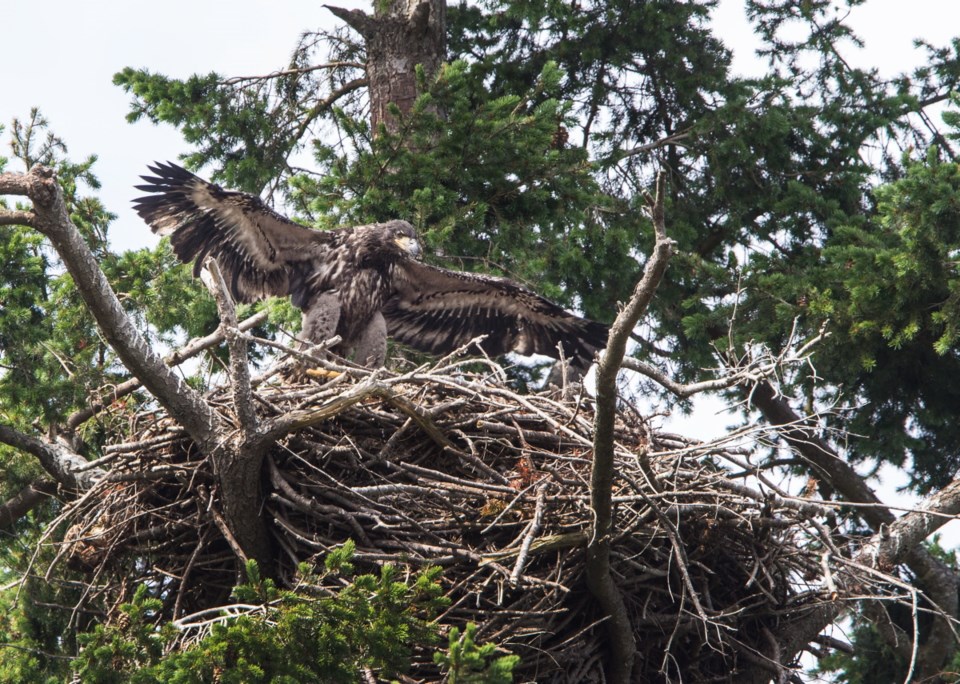 My wife was at Witty’s Lagoon this week when an eagle swooped down and took out a gull in mid-air.
My wife was at Witty’s Lagoon this week when an eagle swooped down and took out a gull in mid-air.
It was a jaw-dropping, non-Disneyfied and perhaps nightmare-inducing nature lesson for the kids gazing up from the beach — and also a perfect illustration of what a landmark bird study reported Thursday.
Populations of a quarter of Canada’s species — raptors, waterfowl — have rebounded dramatically in the past 50 years, according to the 2019 State of Canada’s Birds.
Alas, another quarter — shorebirds, grassland birds, and ones that eat flying bugs — have plunged, said the report, a government/industry/enviro-group effort that studied the population trends of 449 species since 1970.
What it showed is how human blundering is murdering some birds while, at the same time, focused conservation efforts are saving others.
Take that eagle-gull encounter. Populations of birds of prey are up 110 per cent in the past half century, which Victoria naturalist Ann Nightingale (who, along with fellow Victorian David Bird, has the best name in ornithology) credits in part to the banning of the insecticide DDT, which made eggshells thin.
“When birds sat on them, they cracked.”
On the flip side, our gull numbers have tanked (the evidence on your downtown windshield notwithstanding) which might be tied not only to the rise in raptors but to the collapse of herring stocks due to overfishing.
It’s not just gulls. “The rufous hummingbird population is down drastically from 40 years ago,” Nightingale says.
Likewise, the Lewis’s woodpecker is gone from southern Â鶹´«Ă˝Ół»Island, as are the vesper sparrow and tufted puffin. The black scoter is no longer common on the water.
Others will vanish soon. “The skylark population on Â鶹´«Ă˝Ół»Island is probably going to be gone in five years.”
Some people will just shrug at that, as the skylark was an introduced species anyway, but Nightingale cautions that whatever is killing it is probably killing other field birds, too.
Even the most common flyers are disappearing. “We used to have barn swallows,” Nightingale says. “We don’t have them anymore. A bird that was once considered dominant is now on the Species At Risk list.”
What happened?
“We did.”
We waged war on insects, draining wetlands, spraying pesticides and planting bug-resistant crops.
“How many times when you drive up-Island do you have to clear insects off your windshield?” Nightingale asks. “It doesn’t happen anymore.” The buglessness might be nice when you’re camping but sucks for sparrows and other aerial insectivores, whose populations have plunged 59 per cent across Canada.
Climate change has hurt, too. Migratory birds arrive here expecting to chow down on a certain food, only to find they’re too late because nature’s clock is off. “They’re not synchronized as much as they used to be.”
Those same birds also suffer from what happens to them on — or while flying to or from — their wintering grounds. A Saanich beekeeper spoke of finding just-arrived migratory birds, dead, on Prospect Lake Road; when she examined them she found they were blind, which she attributed to the ingestion of chemicals on their way north.
After seeing a steep dive in the population of the once-common bobolink, Canada did a good job of preserving habitat, only to discover that the birds were being hunted and trapped as crop pests while in South America.
Still, Thursday’s report showed local conservation efforts can work. When Nightingale began birding a quarter century ago she was told there were no bluebirds left on Â鶹´«Ă˝Ół»Island, yet a Duncan-area breeding program has succeeded in bringing some back.
Also, B.C. went from five pairs of purple martens in 1985 to more than 1,000 today, thanks largely to Â鶹´«Ă˝Ół»Island volunteers who built nesting boxes.
We can all do our bit at home, Nightingale says. “Definitely we can reduce our addiction to pesticides.”
That includes shunning “insect-resistant” plants; better to put up with the odd caterpillar chewing on the leaves. (Birds are excellent at dealing with creepy crawlers, Nightingale says.
“I saw a little chipping sparrow the other day that had a dozen caterpillars in its mouth.”)
There’s more. Clean your hummingbird feeders regularly, and only use a solution of four parts water to one part sugar. Remember that poison and sticky traps are just as likely to get a bird as a rat. Nightingale doesn’t let her cats roam at will.
“This time of year when your cat kills a bird it actually kills five. There are probably four baby birds back in the nest that are not going to survive.”



